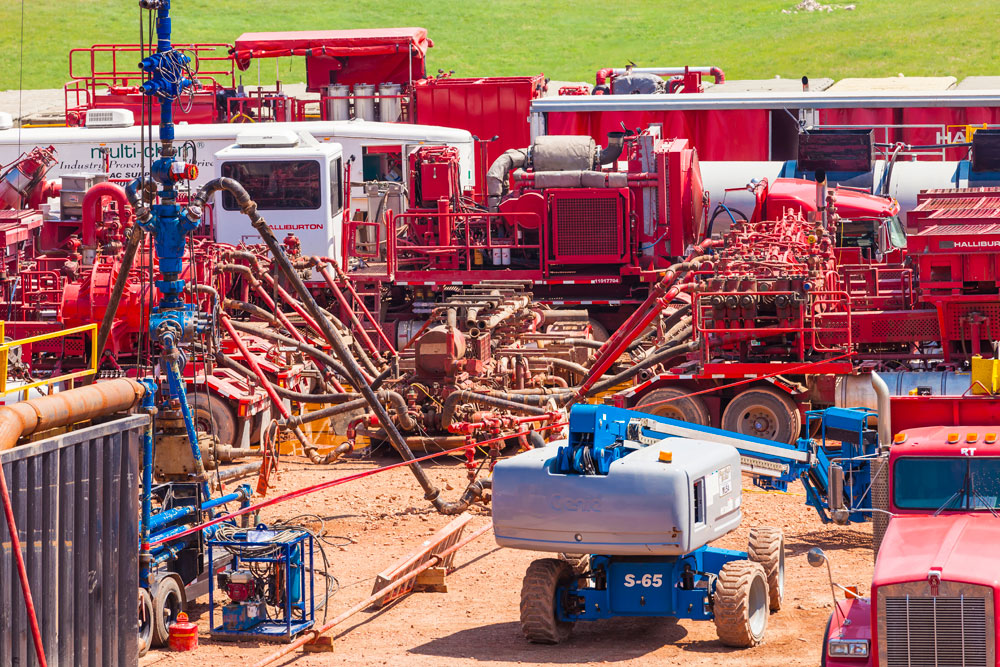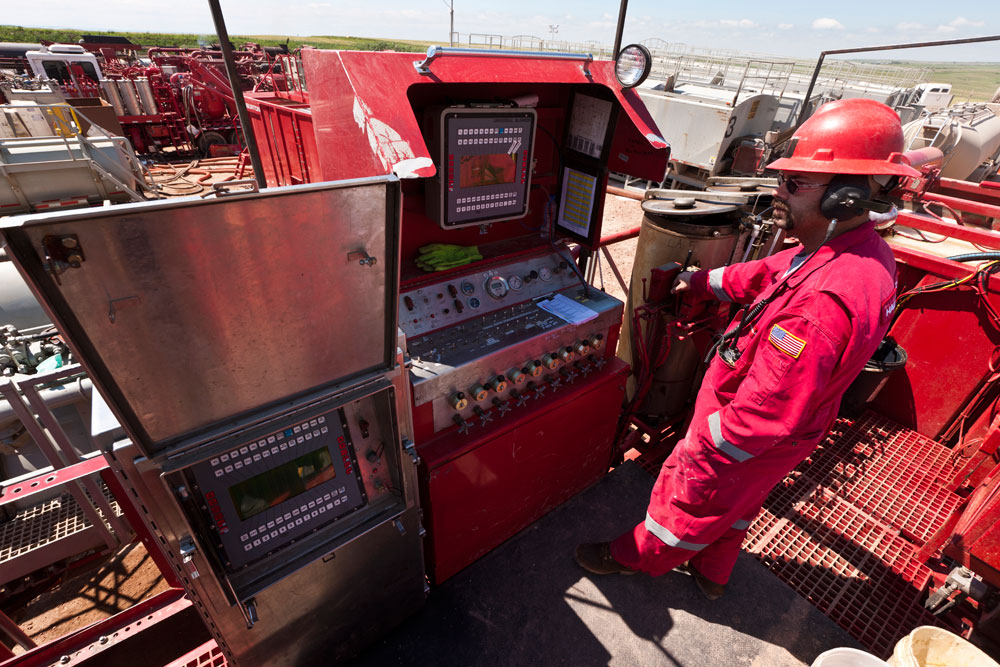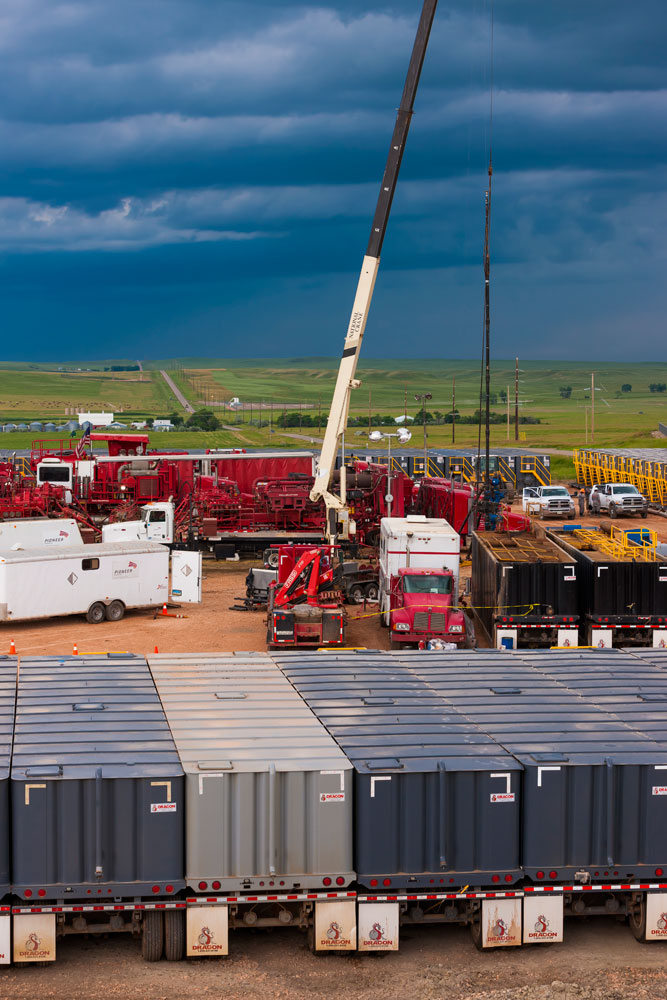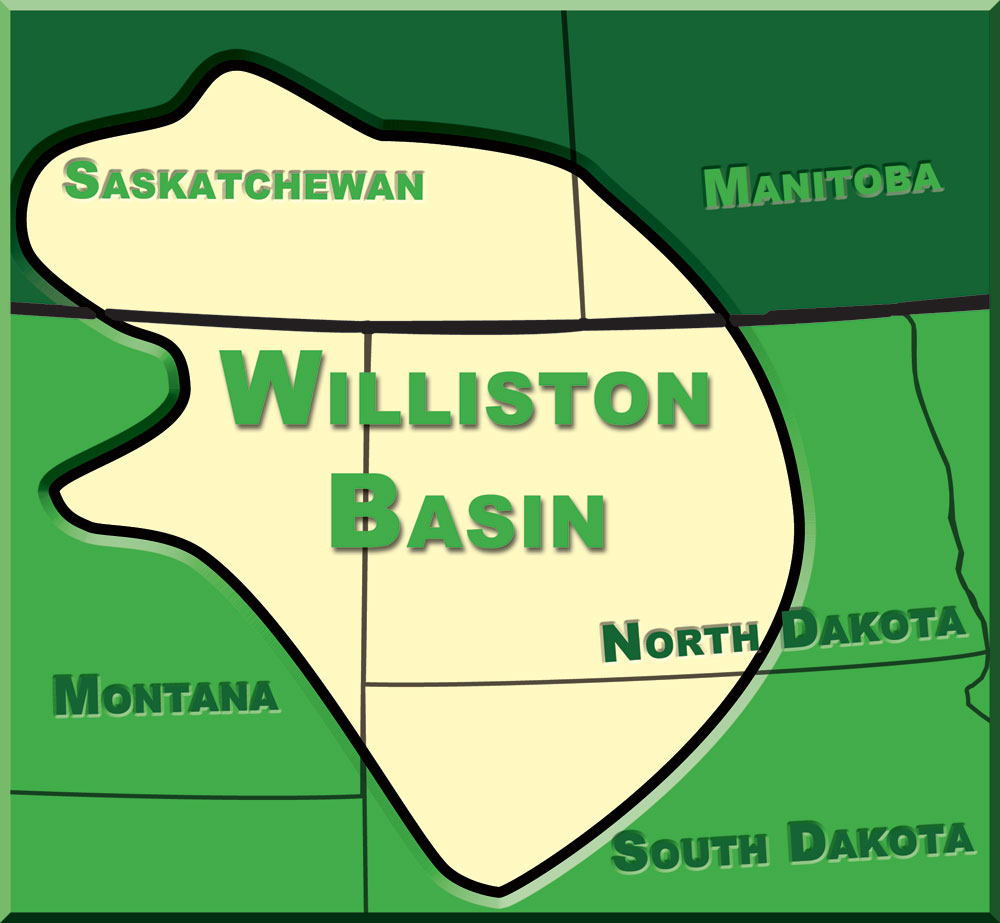Marathon Animation of Hydraulic Fracturing: This 7-minute video explains the process of hydraulic fracturing. Video courtesy of Marathon Oil.
- Billions of barrels of oil and natural gas are trapped in rock far below the surface of the Williston Basin.
- For many years, oil companies knew about this supply but were unable to get the oil out.
- In 2006, the first successful Bakken well was drilled in North Dakota using horizontal drilling and hydraulic fracturing.
- Hydraulic fracturing, The word hydraulic (from hydro = water) means operated by, moved by, or employing water or other liquids in motion. or fracking, is the process of using pressurized water to fracture, or crack, deep underground rock so that trapped petroleum can be released.
- Horizontal wells are drilled in order to reach the pockets of trapped oil.
- Water makes up about 90 percent of the fracking fluid, and sand makes up about 9.5 percent. The other half-percent consists of chemical additives.
- Some of the water used in hydraulic fracturing is cleaned of chemical and rock debris and is then used to frack additional wells. This is an enormous cost-saver.
- North Dakota is one of nearly 20 states that requires oil companies to list on a public website – www.fracfocus.org. – the chemicals used in the fracking process.
-
-
- The process of hydraulic fracturing includes stringent procedures to protect groundwater supplies.
- In North Dakota, the groundwater sources are shielded by thousands of feet of geologic formations above the fracturing operations.
- Multiple layers of casing and cement are also used for safe well construction and protection of groundwater.
- Wells are closely monitored with modern, high-tech equipment.
- The North Dakota Department of Mineral Resources Oil and Gas Division enforces rules and policies that are some of the strictest of any state in the United States.
- In North Dakota, the groundwater sources are shielded by thousands of feet of geologic formations above the fracturing operations.
- The process of hydraulic fracturing includes stringent procedures to protect groundwater supplies.
-
Hydraulic Fracturing
Williston Basin Map: Geographic Representation of Williston Basin.Map courtesy of North Dakota Studies.
- The initial well bore is drilled using a drill pipe and bit.
- After the initial well bore has been drilled, the drill pipe and bit are removed.
- A steel tube, called surface casing, is set inside the well. The tube stabilizes the sides of the well and creates a protective barrier against any underground water reservoirs.
- Cement is pumped in to secure the casing and create a seal to protect groundwater from contamination.
- The well is pressure-tested to make sure there is no seepage.
- The pipe and drill bit are lowered back into the well, and the drilling continues.
- At the appropriate depth, the drill pipe and bit are angled to create a horizontal path.
- More layers of casing and cement are put in place to form permanent barriers along the entire length of the well bore.
- A perforating gun with explosives is inserted into the well to produce cracks in the shale layer.
- The perforating gun is removed, and fracturing fluid (mostly water and sand) is pumped into the well under great pressure, causing fractures deep into the shale.
- The water is removed, but the sand stays to hold the cracks open.
- The gas and oil that had been trapped in the shale then travel from the cracks into the well.
- This process can be done in multiple “stages” along the 10,000 ft lateral – called “multi-stage fracturing.”
Timelapse of drilling & fracking a well: Watch this 2-minute video to see a timelapse of all the machinery, equipment, workers and resources that go into drilling and hydraulic fracturing a well. Video courtesy of Marathon Oil.
- When oil is removed from underground, natural gas also comes to the surface.
- The majority of the natural gas is piped to gas plants, some is used to operate equipment at the well site, and some is flared, or burned.






